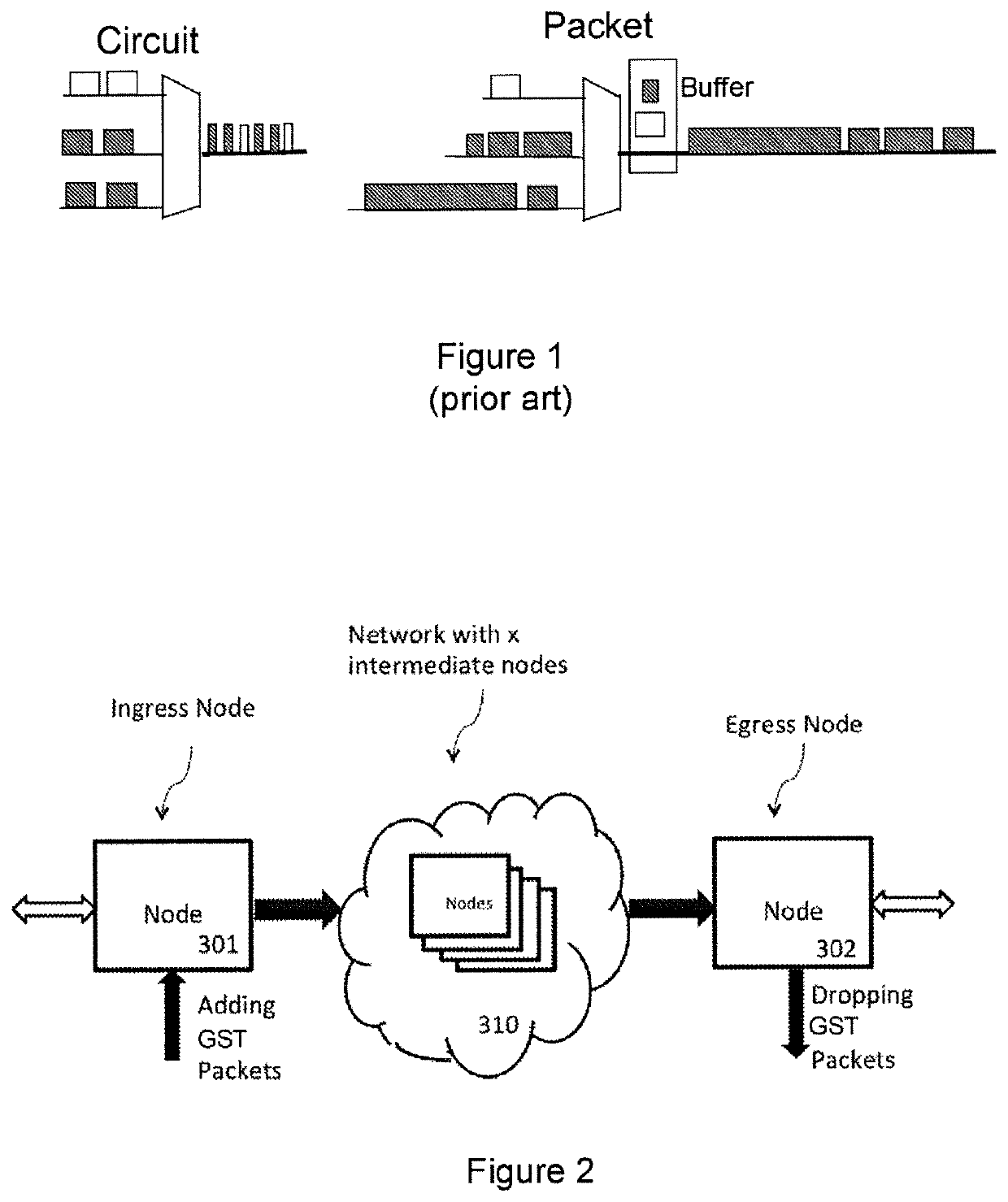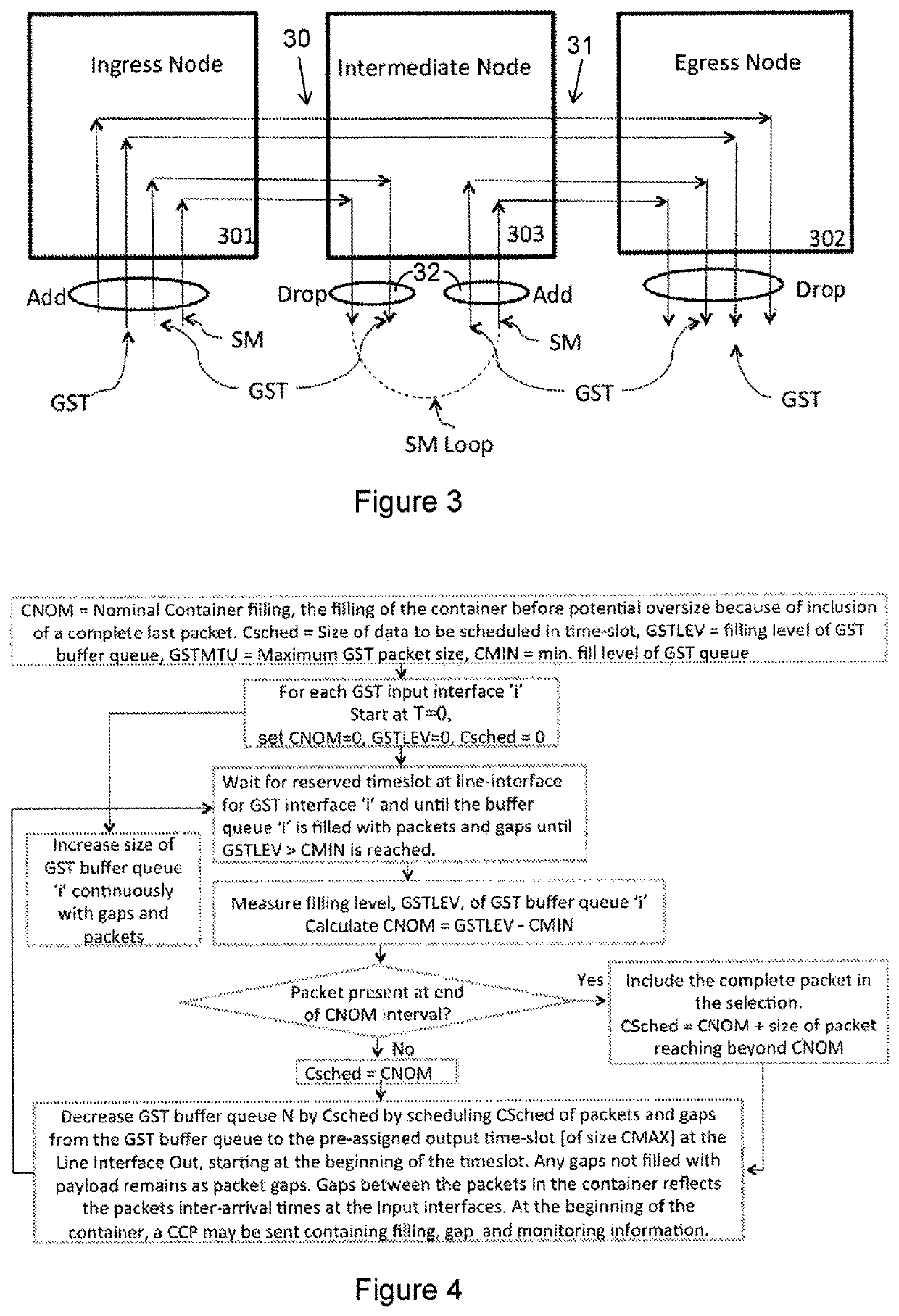Packet-based communication
- Summary
- Abstract
- Description
- Claims
- Application Information
AI Technical Summary
Benefits of technology
Problems solved by technology
Method used
Image
Examples
Embodiment Construction
[0138]The applicant's earlier patent application WO 2012 / 104623 described two service types for traffic in a switched network. It describes a first service type named Guaranteed Service Transmission (GST) which is intended for data that requires minimal latency and packet delay variation (PDV). Data packets sent over this service are named GST packets. WO 2012 / 104623 also describes a method for assembling a number of GST packets in a data container. A second service type, called Statistically Multiplexed (SM), is intended for data flows that can tolerate some PDV and some packet loss.
[0139]The embodiments described below implement various different mechanisms for minimising or avoiding packet delay variation (PDV) in data streams—especially those containing GST packets.
[0140]IETF RFC 5481 defines the terms inter-packet delay variation (IPDV) and packet delay variation (PDV). These can be summarised as follows.
[0141]Let Di denote the one-way delay of the i-th packet of a stream of pa...
PUM
 Login to View More
Login to View More Abstract
Description
Claims
Application Information
 Login to View More
Login to View More - R&D
- Intellectual Property
- Life Sciences
- Materials
- Tech Scout
- Unparalleled Data Quality
- Higher Quality Content
- 60% Fewer Hallucinations
Browse by: Latest US Patents, China's latest patents, Technical Efficacy Thesaurus, Application Domain, Technology Topic, Popular Technical Reports.
© 2025 PatSnap. All rights reserved.Legal|Privacy policy|Modern Slavery Act Transparency Statement|Sitemap|About US| Contact US: help@patsnap.com



